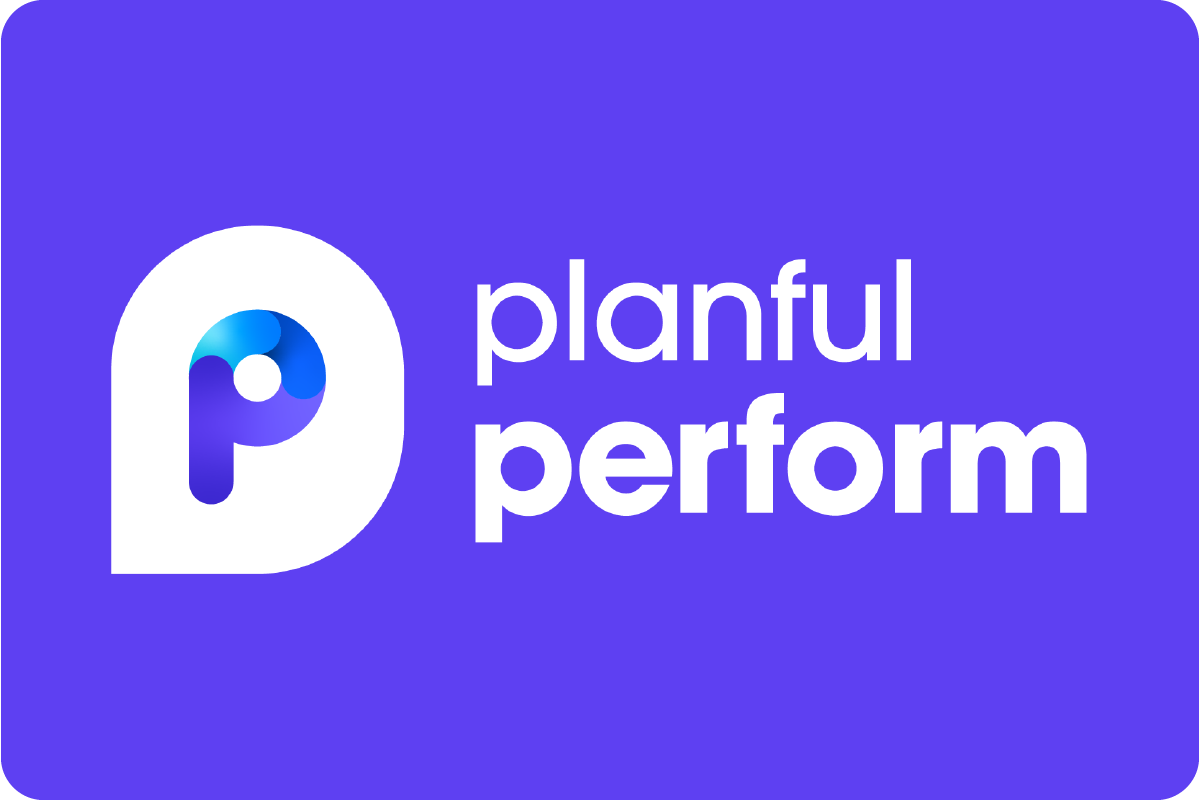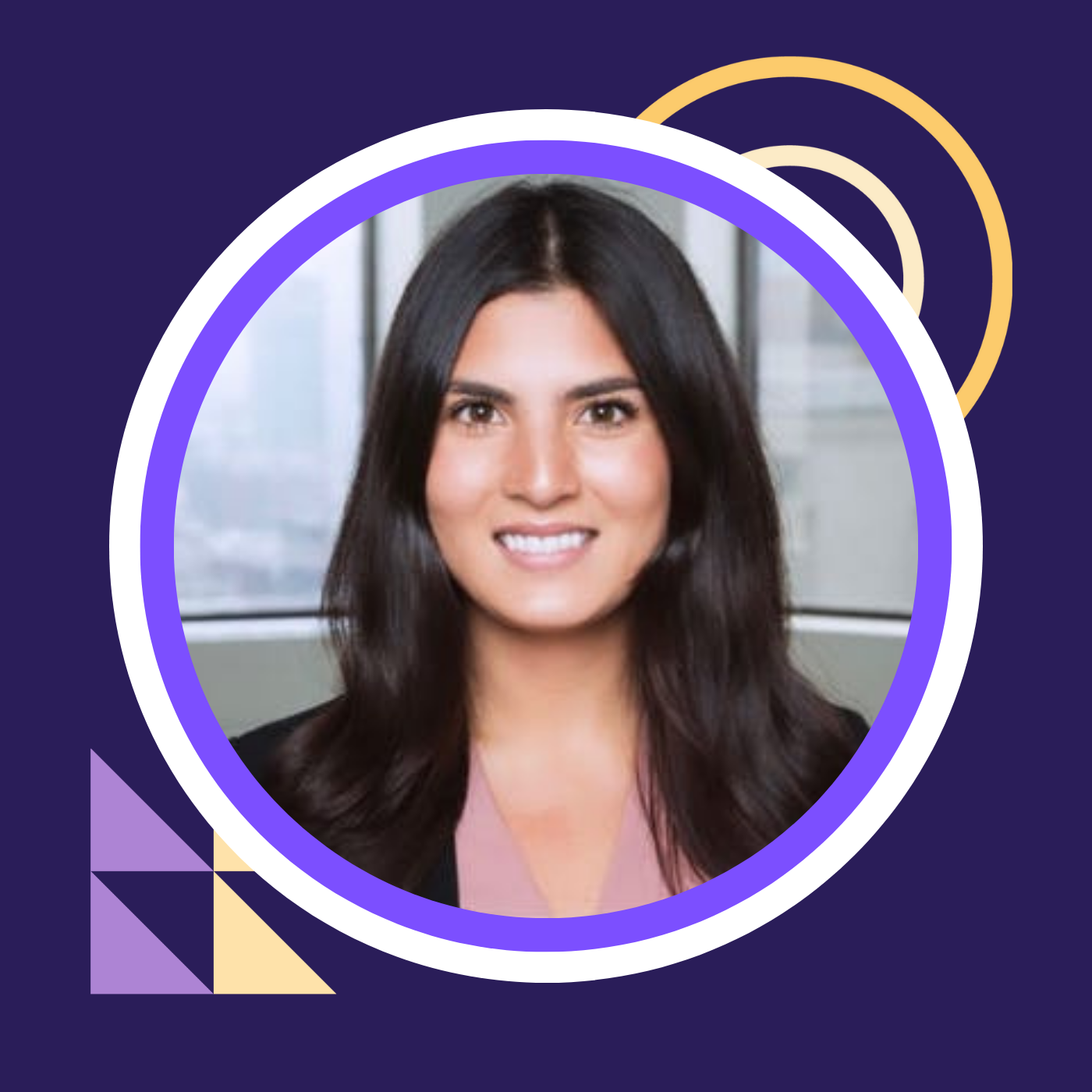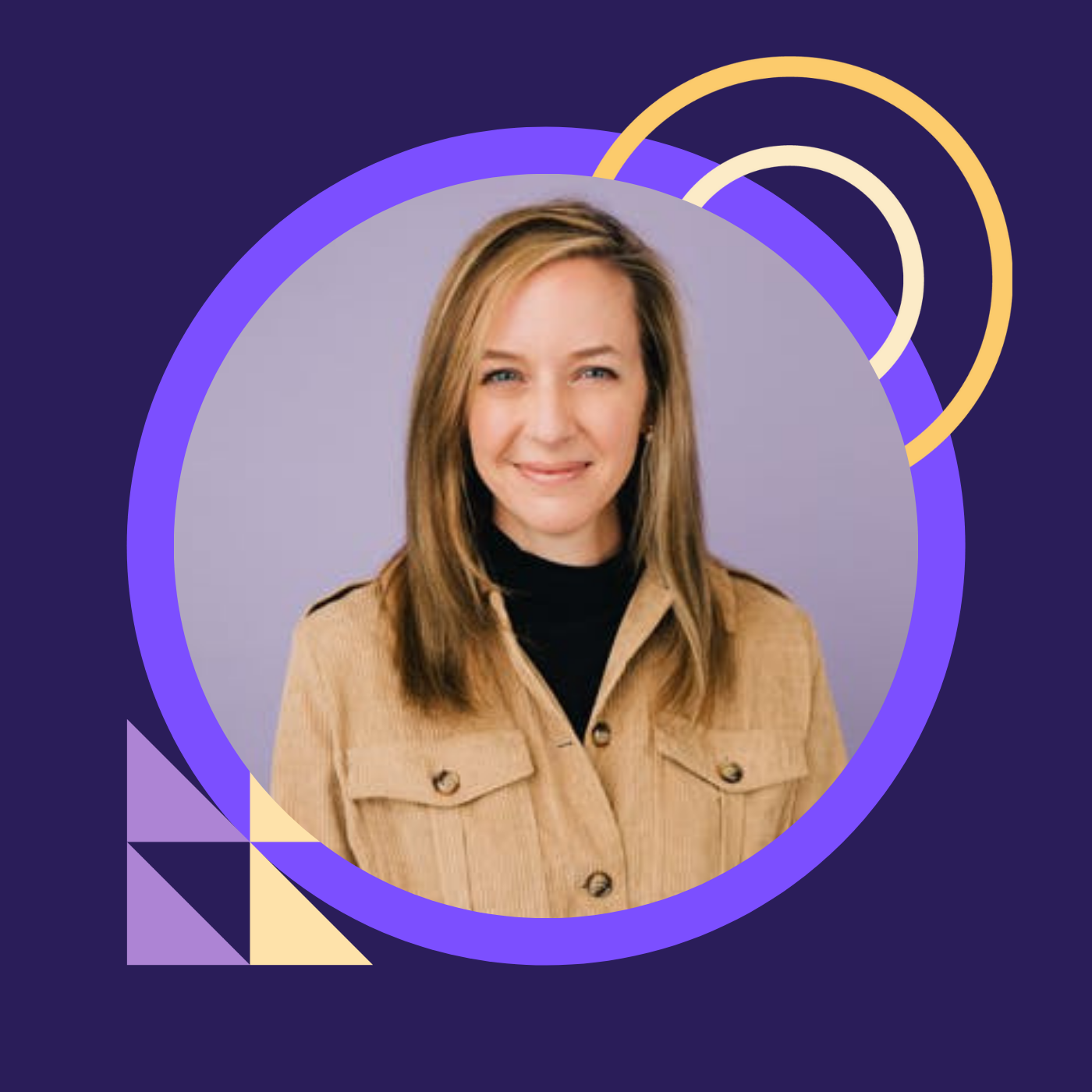The Art of What’s Possible With Financial Visualizations | Lauren Vysohlid
- 0.5
- 1
- 1.25
- 1.5
- 1.75
- 2
Lauren: My name's Lauren, I'm a solutions consultant at Planful. My background is a little different than you might suspect. I come from chemistry and chemical engineering. And then after I completed my master's six years of school, I came to the quick realization that I didn't foresee myself working in a lab for the rest of my life. And so I went back to school at the University of Toronto, where I'm from, and that's where I got a business degree, and really where I became passionate about all things finance and accounting. And so the last five years I've spent working with, and partnering with, finance and accounting folks like yourself to really help find the best fit for solution for organizations. So I spent a little bit of time as a client success manager at Oracle, started out with their marketing automation solutions, and then working with their ERP solutions. And then I spent some time managing the solutions consulting sales engineering team at Versapay, which is a Toronto based FinTech company. And then I found out about this really cool company, Planful, from a friend. And so I've been at Planful for just over a year now, as a solutions consultant. And so what is it that we're here to talk about today? We're really going to be focusing on what we call dashboards. And so throughout our presentation today, we're going to talk about why dashboards are important, how our clients are leveraging dashboarding today. A, what does it actually take to build these visualizations in the Planful solution? And of course, we're going to get into the product and do a bit of a live demonstration. And I'll try and get through all the content as quick as I can, without rushing it, so that we have some time at the end to do a bit of Q and A, as well. And so before we get into the actual content, maybe just a raise of hands of who can kind of relate to this employee here, in terms of maybe feeling this way at some point in your job. And I am definitely not afraid to say that I felt this way. I see lots of hands, so when I think back to when I felt this type of way, I felt overwhelmed, frustrated, maybe a bit stressed out. And the commonality across all those different situations was that I just didn't have the right tools to do my job efficiently. And so out of, oops, sorry, time on manual tasks that I felt could be automated if I had the right solution in place. And so for those of you that are leveraging Planful today, you're hopefully already seeing the benefits of leveraging Planful as that single source of truths, to really aggregate that data across your different source systems, so that you can do all of your planning, forecasting, maybe reporting, maybe some modeling, as well, in the Planful solution. And so when I think about this employee here, maybe I like to think maybe she's a FP& A manager, and she's been given an ad hoc request from the CFO to put together a compilation of visualizations. Maybe that's charts, graphs, tables, key KPIs, and there's a harsh deadline for end of day. And maybe she's in a situation where she's inaudible manually aggregate that data across all the different source systems. And so when I think about finance and accounting folks, like all of you, similar to what Grant mentioned this morning in the keynote, is that you're really those first responders at an organization. And when there's those changes, those challenges; whether those are internal or external factors, finance is really who everyone goes to really analyze the data, provide those suggestions in terms of, maybe, how you need to pivot the organization, and provide those decisions, as well. And so with Planful, you can leverage it as that single source of truth. And what we're going to be focusing on today is how you can put together those visualizations. How you can leverage dashboards to provide those key performance indicators. How you can get a snapshot into the health of the business, and how that can of course differ across the different users, and maybe those that are actually consuming the information as well. And having worked with in FP& A, in the payment space and at Oracle, something that I've definitely acknowledged is that you can have the slickest solution that's out there, but if no one's actually adopting it, then you're not getting the value out of the solution that it can offer. And so that's why with Planful, we've really taken that path of least resistance to make it as easy as possible for our business users to come into Planful, build those dashboards through that drag and drop activity point and click, rather than having to do extensive training or learn a coding language in order to put these together. And so probably thinking," Okay, that sounds great, Lauren, but let's actually see some proof." So let's go ahead and let's actually get into the product. Okay. And, let's talk a little bit about, we'll sort of do it an overview of what our dashboards, from there we'll get into how we can actually build dashboards, and then the different ways in which we can actually share and distribute those across the different stakeholders at your organization. Now, within Planful, similar to other areas of the application, you're always working in that secure and controlled environment. So when a user comes into Planful, you can really cater what dashboards do they have visibility to? What type of access do they have? And of course, what data are they going to have visibility to, in the Planful solution? Now within the dashboards, the rule of thumb that we, that we like to say is, as long as we have the data, then we can put together these charts, visualizations, key KPIs, like what you're seeing on my screen here. And for a lot of our clients, what they're doing is bringing together their financial data, their non- financial data, which might be operational data, it might be headcount data, so that we can have the data readily available to put together these different visualizations, like what you're seeing on my screen here. Now within Planful, we love to say that we're a solution that's built for finance by finance. And that really comes down to the fact that, again, there's no coding language, there's no formulas that we need to input to take advantage of dashboarding within Planful. And we can really customize these dashboards based on who wants to come into the solution, who wants to view a budget owner dashboard versus something more like a cashflow forecasting dashboard. And so these are just a few of the different flavors that we see across our clients today leveraging Planful for. A really good example that I always get when I'm demoing is," Hey, our executives really want to have a nice, pretty screenshot where they can, whether it's an export from Planful, or they actually come into the Planful solution and they can see all of that information that is relevant to them." And so with Planful, you can have these different dashboards. You can cater the type of access that someone has. Now, when working within these dashboards, it's meant to be interactive. It's meant to be dynamic in nature. So we can have filters applied to a specific visualization. We can point and click to go ahead and actually investigate the data that's being presented to us. But let's take a step back and let's think about how do we actually put these visualizations together. And so within this view, if we wanted to go ahead and edit a visualization that we've already put together in this dashboard. Let's say we want to take a look at this one here. Now, this is really what it takes to put together a visualization. We identify what type of, what we call object, we like to have. So just think about a pie chart, a bar graph, column, a key KPI. And then where is that information actually coming from? So this is where we can pull in that financial information. In this case, we're actually pulling in that workforce, or headcount, data for this visualization. For those of you that are maybe leveraging dynamic planning or leveraging spotlight today, you might already be putting together visualizations in the Planful solution. And so dashboarding is just another area of the solution where we can put these together. And so I've got it in my environment, a ton of those dynamic planning models. And so what I can do is I can even create a KPI, that's pulling information from that model specifically. Maybe that's a revenue model, maybe that's a cash flow forecasting, I've got a ton, but in this case, we're pulling that information related to our headcount. Now, if I think about a situation where I wanted to come in, actually want to make a change, and I want to add some other accounts; to accomplish that, we're just going to point and click. I can see my chart of accounts that I've set up here in my environment. And I could maybe click a couple more of these. And then what ends up happening is that, when we go ahead and make this change, when we come back into our dashboard to view that visualization, it's going to be updated with those new accounts that I've gone ahead and added there. Now let's think about a situation where you're not leveraging dashboarding today. Let's say, and we want to go ahead and actually build something from scratch. So in a similar fashion, what we would do is we can go ahead and rather than edit a current visualization, let's go ahead and let's build a table here. And so now this is where I'm starting with sort of that blank canvas. And I can define where do I want to pull that information from? Let's say, it's that workforce information. And I want to go ahead and do an employee summary report. I put my label on and now I can start to decide," Okay, what information do I want to pull into this report here?" Apologize. My Wi- Fi is not great. The beauty of doing live demos. There we go. Okay. So let's go ahead and I could select something such as a scenario. And then here I'm prompted with all of those scenarios that I've gone ahead and configured in my environment. Perhaps I want to go ahead and say," Okay, current forecast." Maybe I want to pull in information for a specific entity. I'm prompted with my entity hierarchy; in this case, I want to select my US1 entity. And then maybe for my timeframe, I want to go inaudible the current month. So as I'm doing this, hopefully it is coming to light, why we say this is a solution that can be owned and maintained by finance. And that's really because there's no formulas that I'm going ahead and building in order to take advantage of these dashboards. Rather, I'm just seeing my... Having that visibility to my different hierarchies, and selecting what is it that I'd like to include in this table specifically? And now the final piece of this visualization that I'll include is I'm actually going to go ahead and add some employees. I apologize. When I created the new visualization, I forgot to select the" Where I'm pulling that information from." So that's a good thing to remember, as you're going ahead and doing this. And so these are, if I just think about dashboards and kind of what we see across the different clients that we're working with, is there's a matter of creating these visualizations for the aspect of distributing those across the different individuals. Whether those are Planful users, or those who are actually going to be people that are, maybe, not coming into the Planful solution, but they want to have visibility to that information. And so for all of those visualizations that we can put together, and within a single dashboard, so a combination of those graphs, charts, pie charts, whatever you'd like to have; what we can do is we can actually have a way to export that information. So maybe that's an example where we want to have a PDF, or image, where we're actually exporting and sharing that. But another option that you have within Planful is if we think about someone who's actually coming into the Planful solution, we can go ahead and we can share access to that dashboard. So maybe that's a situation where we want to give them complete access. Maybe they just have edit access, or maybe they want to just have that view only access. And so we can configure that within Planful, so that you can actually share that information across those dashboards that you're setting up in this solution. And so now that I've gone ahead and put together my employee report, I go ahead and actually save that information. It's now going to be added as that visualization at the bottom. And then we can come in and we can think about things like formatting, the aesthetics of this table, where we would like it to sit. And then in terms of actually building those dashboards, that's really what the effort looks like in terms of putting those together. And so maybe we're in a situation where you've got really excited from dashboards because of this session that you saw at Planful, and you've put this business performance dashboard together. Now you can really start to leverage dashboarding to investigate that information that's being presented to you. So if I think about this OPEX comparison here, something that sort of jumps out at me is that there's this spike in Q2 2023/ 4 for my 2023 forecast. So within Planful, what you can start to do is investigate and understand that information that's being presented to you. And so what this starts to really eliminate is that need to have multiple, let's say, spreadsheets open. If you're doing some in, let's say Excel today, and really understand where is this spike coming from? Are there any notes or attachments that are included? In this case, it's an amount for$ 2. 5 million. I think it's safe to say that this is the result of a potential fat finger. And so what we can do from here is we can actually start to take some action. So I can go directly from that drill through, into my OPEX template, where we have that$ 2. 5 million. Now, because I've been granted accessed to actually come into Planful and change those inputs, then I could go ahead and I could make that update. I could do the input directly into the cell. I can copy and paste. I could use a formula. And so this really starts to showcase the benefit of Planful, in the sense that it is that end to end FP& A solution. So it's that one stop shop, where we can do all of your planning, your forecasting, your reporting, and potentially now, you're dashboarding in a single solution. And so once we go ahead, we make those changes, when I come back into my dashboard, what ends up happening is that the power behind working in that connected and collaborative environment, is that now what we're going to see for that OPEX comparison, is it's going to update to reflect those changes that we made in that OPEX. So now we can see that spike is no longer there. I've mitigated the risk of going ahead and maybe sharing this across different stakeholders with that fat finger. And, now I could go ahead and actually think about, do I want to export this? Or maybe do I want to share this dashboard with another potential Planful user, and actually decide maybe what type of access they would have. Now as you're working throughout these dashboards, this is really where that customization can come into play. This business performance dashboard might look great, but maybe not perfect for your organization. And so this is where you can really decide, how do I want to slice and dice these visualizations that you'd want to have? Maybe we want to think about having a budget owner dashboard, where we can actually come in and have those filters across the entire dashboard. So being able to look at these visualizations across a specific department; across a specific entity; across a specific grouping, maybe, of your customers. And so just coming back to the fact that we can put that security and control in place, is I've got that, what we call, that admin or power user access, so I can see all of my entities, I can see all of my departments and customers in my environment. But we can set it up in a way, so if we're starting to involve your department heads, perhaps that head of sales and marketing; let's just make sure when they come into this budget owner dashboard, they just see the data for their department, rather than having that selection, like I do, to look at this across all of the departments that we've gone got here and that we've configured in our solution. And so, as you're going through these dashboards, you can have that drill through capability across all those different visualizations. So it's not just that OPEX comparison that we're drilling through. Maybe we want to drill through on headcount. Maybe we want to drill through on cashflow forecasting. Again, that's really where the art of the possible really comes into play with the Planful solution. And so with Planful, very similar to, and not unlike, the other areas of the application, really what our goal here is we want to increase that financial visibility across your organization with that finance own solution. So we want to provide you with that data, so that it's at your fingertips, so that when it comes to your everyday life, as you have to pivot because of these internal and external factors that influence your organization, you can use these key KPIs, these visualizations, to really help you make those key decisions. And also make them well inaudible formed about your organization. And so, maybe, I'll do a bit of a pulse check. Maybe I'll ask, first question, is who here is now excited about dashboards, or maybe saw something that they hadn't seen before? Hopefully. Okay, great. Lots of hands. I'd be happy with one, that makes me really happy. And so the theme of perform is better together. And so hopefully throughout that demonstration, and you got a little bit of an understanding in terms of how you could start to leverage dashboards within your own Planful instance, with your own data. But of course, if you have questions, we have a Q and A session, of course, right after this, but we also have a ton of resources available to you at Planful Perform. So of course, you've got solutions consultants like myself, and my team members, at the demo booths all week. You've got client success managers in attendance. You can book office hours with solution architects, and we've also got a lot of our great partners here. And of course, you've got customers that you can learn from as well. I don't know if anyone here attended the dashboarding session before with Kelly, one of our customers, but a ton of resources available to all of you to really better understand, and maybe ask some of those more pointed questions on the topics that you're learning at Planful this week. But with that, just want to, again, thank you all for spending your time to attend my session and being here. And I'll go ahead and pause here and see if inaudible any questions. Yeah?
Speaker 3: Dashboard I share any of the person using not inaudible dashboard.
Lauren: So the question is if you create your own dashboard within Planful...
Speaker 3: inaudible user.
Lauren: Okay.
Speaker 3: inaudible so I share with them or it'll be for inaudible.
Lauren: Yeah. So the question just so everyone else can hear is, so we've got a situation where there's a super user, who would want to go ahead and create a dashboard and is asking A, when they go ahead and create that, what type of visibility would other users have in Planful? Is that correct? Okay, great. So that's where that security would come into place. And so once you've gone ahead and created that dashboard, that would be your dashboard. And then you can share that with the other users. And then that's where you can decide what type of access they would have. So maybe you want them to have that sort of that admin power user access that you've got. Maybe just want to allow them the ability to edit a couple dashboards or add a new one. Or you could decide if they just needed to have that read only access as well.
Speaker 3: inaudible.
Lauren: Correct? Yes. So be able to sort of understand and interact the data, but not be able to go in and create any new visualizations. Of course. Yeah. Go ahead.
Speaker 4: What are you hearing from customers that are the biggest pain points with them, that's preventing them from taking full access of the functionality behind Planful?
Lauren: Yeah. Great question. So the question was, what are we hearing from customers that are preventing them from taking advantage of dashboards? Honestly, what I would say is that they might have something like a dashboarding tool already in place that they've sort of invested time and money in. So you just think of Tableau or Power BI. So when I'm getting on calls and doing demos with clients, a lot of them do have a bunch of tools in place, one being that BI tool. So that might be a situation where they've already invested that time, but maybe they want to use Planful for other purposes, like reporting. Maybe they want to do some planning. And then from there, it really starts to be that crawl, walk, run approach. And a lot of our clients will also start to use dashboarding within Planful. Maybe it holds a different purpose and the visualizations in their BI tool. But I would say that's probably the most common reason why, maybe, we don't see customers adapting it right out of the gate. Yeah.
Speaker 3: Well, continuing to-
Lauren: Sure.
Speaker 3: This question, I think, I saw the Power BI and other things that you can do, but the problem is not that much of a problem. Like you needed to putting some simple formula. There are simple, some people maybe just scared of putting a little bit formula stuff in, when you created the visual picture stuff. But is that Planful, you guys, you really don't need to do all those, but have the same effect or even better visualization?
Lauren: Yeah. Great question to the question was around some of those more BI tools that require formulas to put together visualizations, and more asking about in Planful, if that's the same experience. And so what I would say is, Samantha, you're correct, there's no need to go ahead and use any formulas to put together the visualizations in Planful. And so a lot of the feedback that we hear for companies that have experience with those BI tools is that it's a lot easier to do in Planful. So, what we sometimes start to see is people moving away from some of those more BI tools and starting to do all of that visualizations in Planful, because it doesn't require those formulas. It's just going to prompt you with the dimensions that you've configured, so you can point and click.
Speaker 3: And the reason you do that is because, maybe, you guys already built something behind it, or-
Lauren: Yes. Because we already, well, we already have the data in Planful. And everything in Planful is going to be driven off of those dimensions or hierarchies. And so really, we've put that focus on not having to require clients to use formulas or learn any coding language. Yeah. Go ahead
Speaker 3: To the same question, for design considerations you have to take when you're designing and creative so that you have that inaudible which you can see and click inaudible designing the dashboards?
Lauren: Sure. So the question was around in terms of designing the dashboards, sort of what thought needs to go into it? Yeah, of course. What I would say is that in terms of the design piece, it's going to be different for every company. Every company kind of wants to have their own dashboard. But what I would say is that as a sort of that first step is really just making sure you've got all of those different dimensions configured in the solution that you'd like to have reflected on the dashboard. So whether those are dimensions for your chart of accounts, whether it's specific scenarios that you want to compare in the visualizations; I would say that's part the most important piece. And then it really just comes down to the business need, in terms of what visualizations do you do you want to have, but also what are those requests that you're getting from other stakeholders
Speaker 3: Standard inaudible of the box that plan provides?
Lauren: Good question. So the question is if we've got any standard out the box dashboards that Planful provides. What I'll say is that I have yet to see a company that does a business performance dashboard identical to another company. So we don't want to put anyone in a box and that's why it's really more of that blank canvas, so that you can create it and build it and really customize it for yourself. But what we do have, of course, is we've got partners, we've got resources at Planful that can really provide those best practices, in terms of what are we seeing with similar organizations, similar size that are leveraging dashboarding today, so that I can really sort of act as that starting point, and give some visuals and then sort of build off of that based on the requests that we get. Hi, go ahead.
Speaker 5: Do you have the ability to bring data that's made to dynamic planning back into the application? inaudible. Can you move data back into a dashboard that you built out?
Lauren: So is the question, if we can build dashboards off of dynamic planning models?
Speaker 5: Right.
Lauren: Yeah, of course that's a really common use case. What a lot of our clients that leverage dynamic planning today, we see a lot of times where there's maybe a couple visualizations to sort of a company, that planning that you're doing. And so what we can do is we can have a dashboard that's completely catered to that specific dynamic planning model. And so since it's that connected collaborative environment, as you're making those changes in your dynamic planning template, we come back to the dashboards and you view that, and it's going to be updated with those changes that have been made. Yeah, go ahead.
Speaker 3: Working on that point, does it have to be in the dimension then could be a calculation inaudible?
Lauren: In terms of the-
Speaker 3: Data that you pull into inaudible.
Lauren: Yeah. As long as we have the data, then we can pull it into the dashboard.
Speaker 3: It doesn't have inaudible.
Lauren: I would say it, typically, it would have to fall into one of the, I guess, hierarchies. So as long as you have that hierarchy reflected in the dynamic planning model and that's set up properly, then we should be able to pull it. But I can definitely take that offline and we can chat more at the demo booth if you'd like. Yeah, of course I don't have the time. Okay. I apologize. Well, thank you for all the questions. I really appreciate it. If there, is more, you can inaudible in my team at the demo booth, but thank you all for joining today and.
DESCRIPTION
Dashboards offer a fast, powerful way to deliver visual, interactive insights for both financial and non-financial data. Hear Lauren Vysohlid, Solutions Consultant at Planful, explain how Planful customers are giving stakeholders quick and easy access to the metrics needed to drive their corner of the business. She’ll also detail how dashboards, visualizations, and reports can be better developed to help decision-makers easily spot trends, identify performance gaps, and stay ahead of business goals.
Today's Guests








